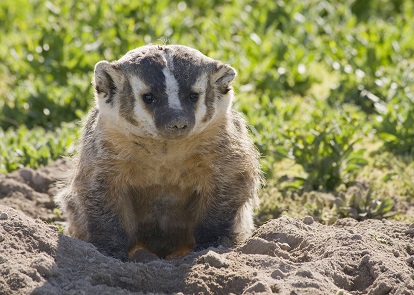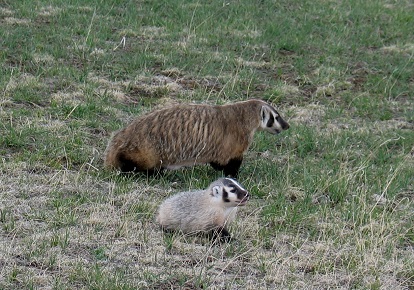
Badger at a burrow. Oregon Department of Fish and Wildlife ,  via Wikimedia Commons
via Wikimedia Commons
October 6 marks National Badger Day! Well, technically, this is only an official event in Britain. CNDDB decided the celebration should be extended 120° to the west.
Fuzzy creatures snuggled up in warm burrows? Bumbling traffic hazards? Cunning predators? Yes, Taxidea taxus, the American badger, can be seen as any of these things.
Badgers are found throughout much of North America and are known from every county in California. They are most commonly found in treeless habitats with sandy soil suitable for burrowing. Badgers need large areas for foraging. An individual’s home range may extend over hundreds of acres.
A flexible predator, the badger is most often nocturnal but may also be active in the daytime. While rodents are their primary prey, they also hunt reptiles, birds, and insects. Badgers don't always hunt alone; pairs of badgers and coyotes have been documented cooperating as a hunting party. That’s a tag team of intelligent predators with complementary skill sets.
The American badger is a California Species of Special Concern because habitat conversion has significantly reduced California's badger population. The CNDDB includes over 500 badger occurrences across the state. Since they are most active during dark hours, sadly many of California’s badger records are based on roadkills. While a highway doesn’t provide ideal habitat for a badger, it is still important to document their presence within a landscape. We encourage you to report any badger detections (alive or dead) through our Online Field Survey Form.

Badger with young. National Park Service photo.